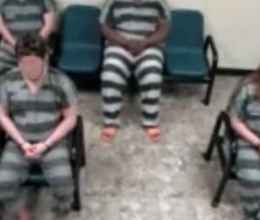
For the third time in ten years, reports of alleged sexual assault by staff on detained youth at state secure juvenile facilities have surfaced. It was inexcusable the first time, and it is inexcusable now.
Following the horrifying news from the Gainesville state youth facility this month, the ACLU of Texas joined other advocacy organizations to express our deep concern over the decades of problems related to the state secure juvenile facilities, formerly overseen by the Texas Youth Commission and now run by the Texas Juvenile Justice Department.
The news regarding criminal charges and allegations of sexual misconduct involving multiple staff at the Gainesville facility, along with other unsafe conditions, are just the most recent examples of an ongoing and unaddressed problem with juvenile justice in Texas. The Texas juvenile justice system is overly dependent on large, centralized facilities in rural areas that research shows fail our youth.
A report released in 2015 by the Council of State Government’s Justice Center revealed that Texas’ state secure facilities not only fail to rehabilitate young people – they actually make them worse. They produce the opposite of what they set out to achieve: young people released from them are in fact more likely to reoffend than when they were committed. Sadly, this comes as no surprise to those familiar with TJJD’s track record.
The history of systemic problems in the juvenile justice system stretch back much further. In 2007, allegations of sexual assaults by staff on youth emerged and led to a series of legislative reforms. Five short years later, despite ongoing attempts to reform conditions inside facilities and a massive reduction in population, safety concerns led then-Governor Perry to ask Jay Kimbrough, an early architect of the post-2007 reforms, to return to the newly-created Texas Juvenile Justice Department to attempt to restore order. In the early 1970’s and into the 1980’s, the state was subject to litigation over the state of the juvenile justice system.
As we can see, the problem was not fixed.
We are calling on the Speaker and the Lieutenant Governor to create a Joint Legislative Committee that will:
- Determine how to continue the reforms initiated in 2011, focused on moving away from use of secure facilities and toward community-based alternatives, with an eye toward addressing gaps in services through regionalization;
- Create a timeline for closure of the remaining five state secure facilities;
- Create a timeline for creating smaller facilities closer to the youths’ home communities, examining whether the existing TJJD halfway houses could be part of this new system of smaller facilities;
- Make recommendations for a funding model that recognizes gaps in services, and differences in funding at the local level and that incentivizes research-based practices.
- Identify mechanisms to move youth from state secure facilities to safer settings and consider moving young offenders aged 15 and younger out of facilities immediately.
We must break the cycle of abuse in our juvenile justice system. Our current approach is failing Texas youth and standing in the way of their shot at a promising and productive future.







